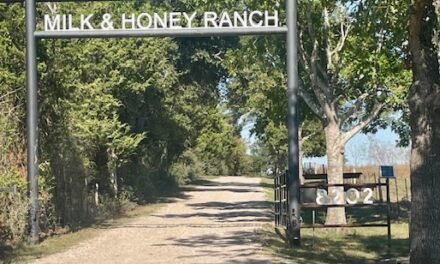
Patagonia: Immerse yourself in the soul-stirring landscape
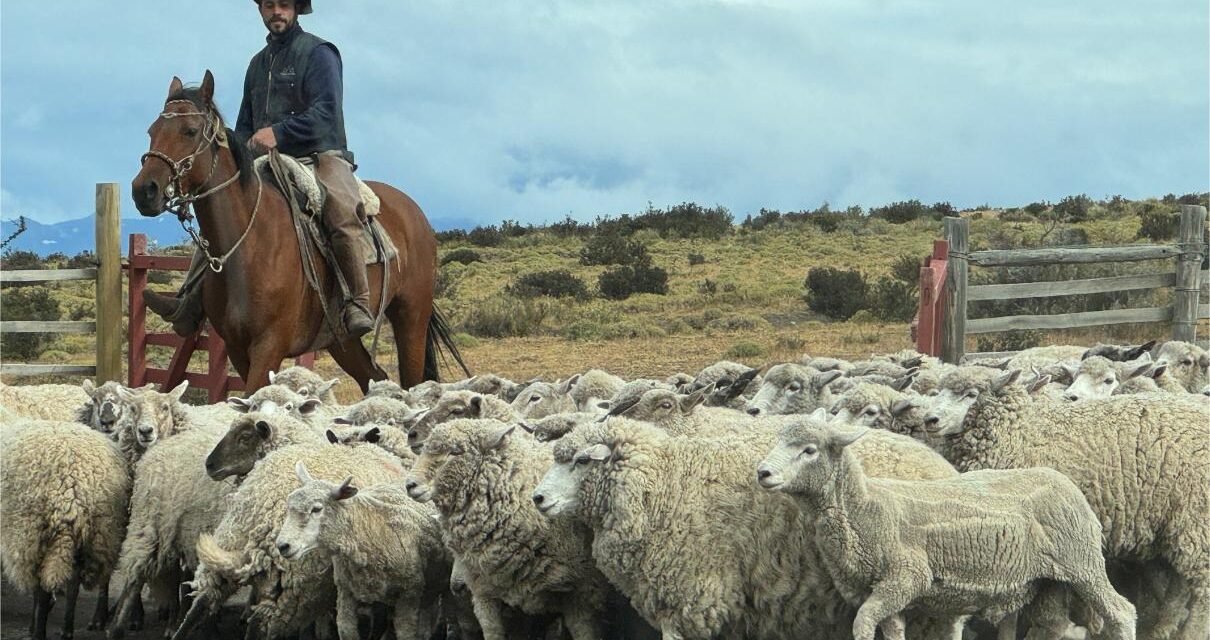
I had promised myself I wouldn’t get up on another horse – ever – as past horseback riding experiences have shown me that horses and I don’t get along. Typically, I would be told I would be riding a gentle mare only to have that “gentle” mare persistently nip at another horse, constantly munch on the grassy smorgasbord, balk at crossing a shallow stream, then turn around and head the other way, and my favorite, unexpectedly take off at a speedy trot, leaving the rest of the group (and almost me, too!) in the dust. When I’ve noted these issues to equestrians over the years, the response is always, “The horses know you’re not in control and they will take full advantage of any opportunity.”
So, you might question what I was doing atop another “gentle” mare, this time in Patagonia, of all places. After saying “no” several times to a horseback riding excursion, I was finally persuaded by the head guide at Estancia Cerro Guido to give it a go. He assured me the pace would be slow and the horse would be obedient (yes, I’ve heard this before!). Most importantly, the tour would offer another way for me to experience the sublime landscape, as well as understand how horses and Patagonia are entwined culturally and historically. The group consisted of just my husband and I, the head guide and one of Estancia’s gauchos or “cowboys.”
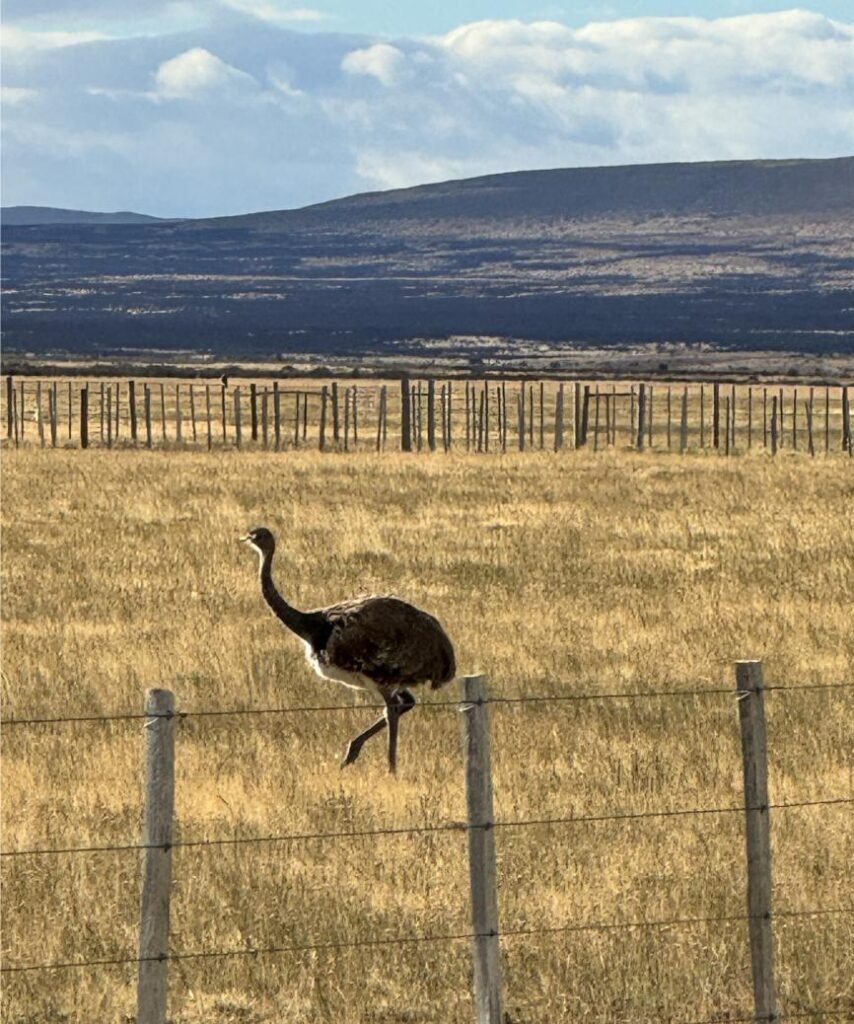
Darwin’s rhea, photo by Debbie Stone
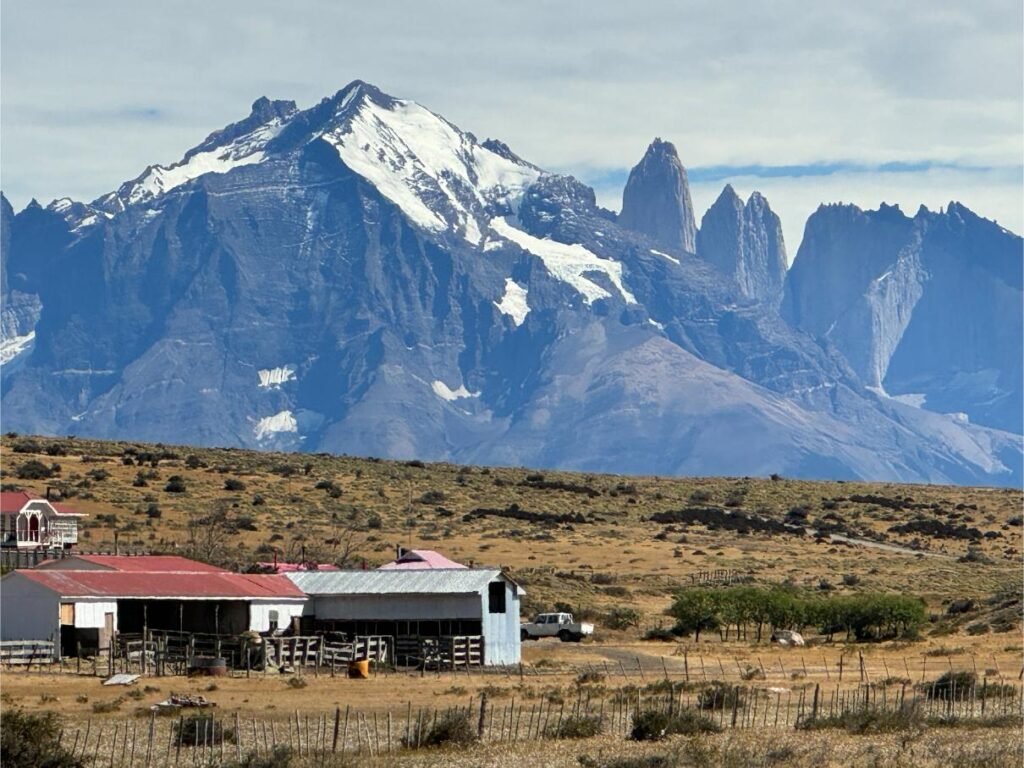
Estancia, photo by Debbie Stone
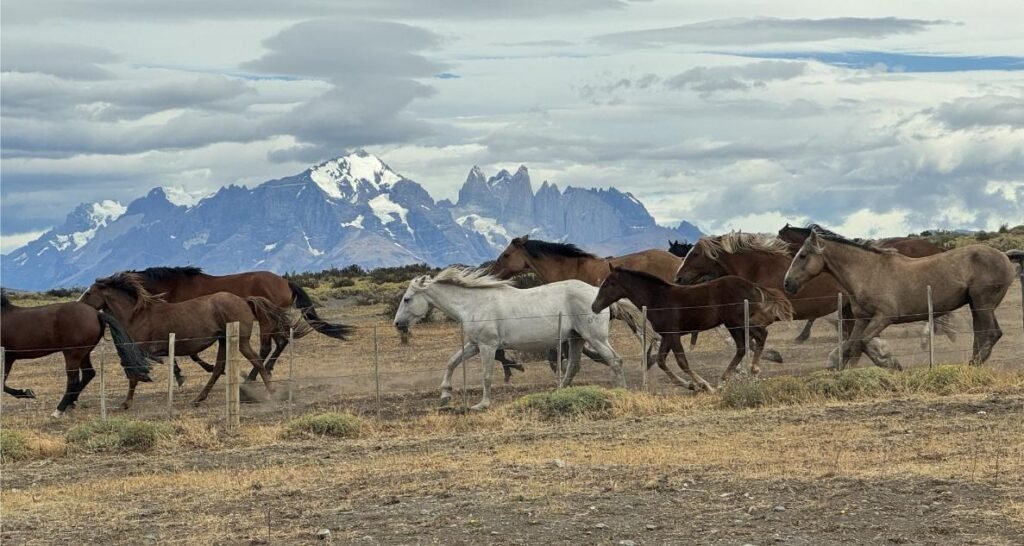
Horses heading to the stable, photo by Debbie Stone
Initially, I was very nervous as I got on my horse, Lola, and I’m sure she could sense that right off the bat. But after a while when I realized she was content to follow the other horses without bothering them, responded well to my occasional use of the reins and never stopped to eat, I was finally able to relax and truly appreciate my wondrous surroundings.
During the ride, we stopped at a gaucho shelter and took part in the tradition of drinking mate with our gaucho, while learning about the gaucho culture in Patagonia. These “cowboys” are symbolic characters of the Chilean countryside. They round up sheep and cattle, train sheepdogs, shear sheep, mend fences and help preserve the natural grasslands, play an important role in livestock protection and tend to the horses. They are incredibly skillful riders who appear to be horse whisperers with an almost telepathic connection to the animals. And they are also known to be true pathfinders within this geographical arena.
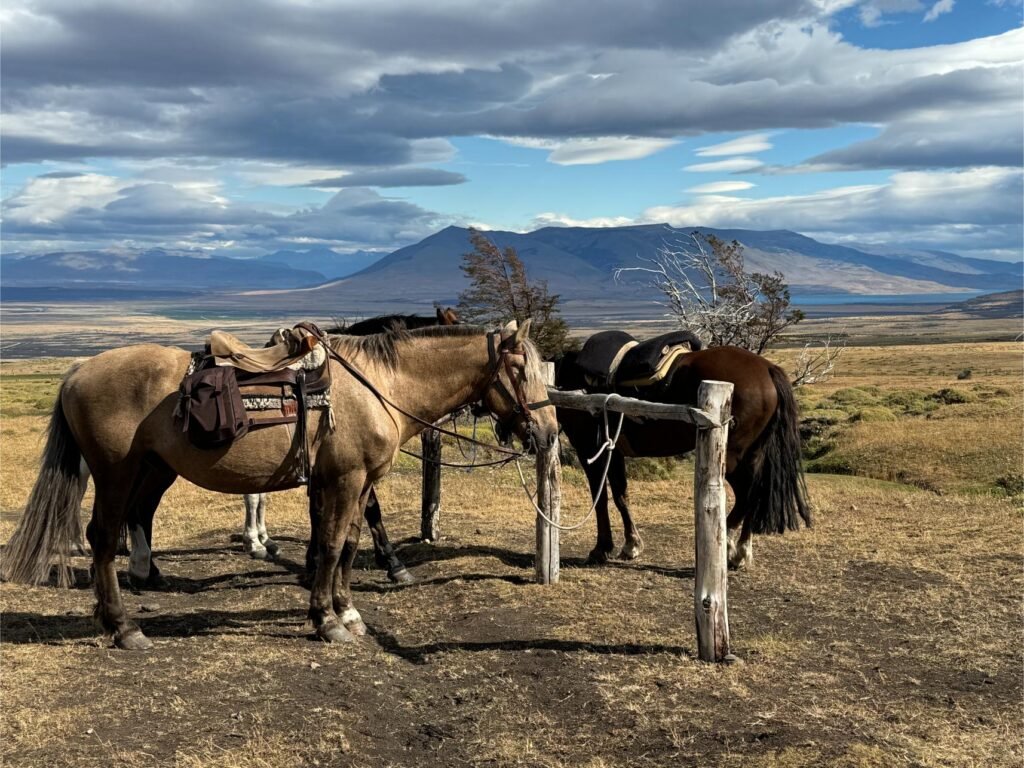
Lola awaits! photo by Debbie Stone

Dinner buffet, photo by Debbie Stone
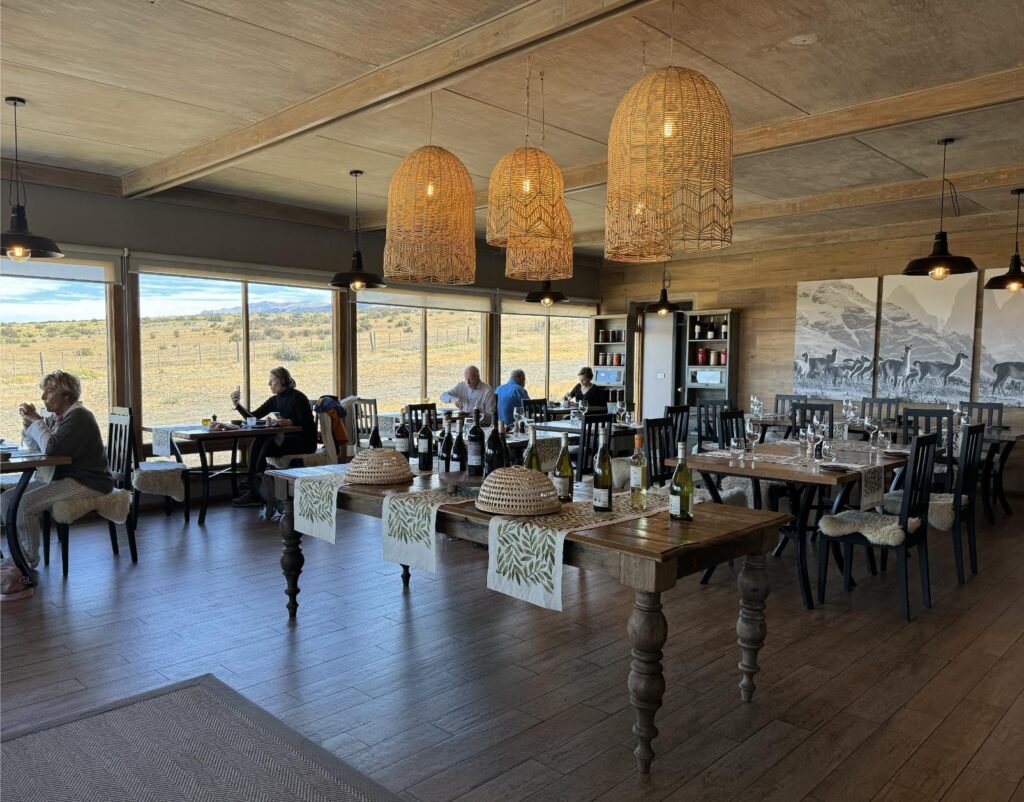
Estancia Cerro Guido restaurant, photo by Debbie Stone
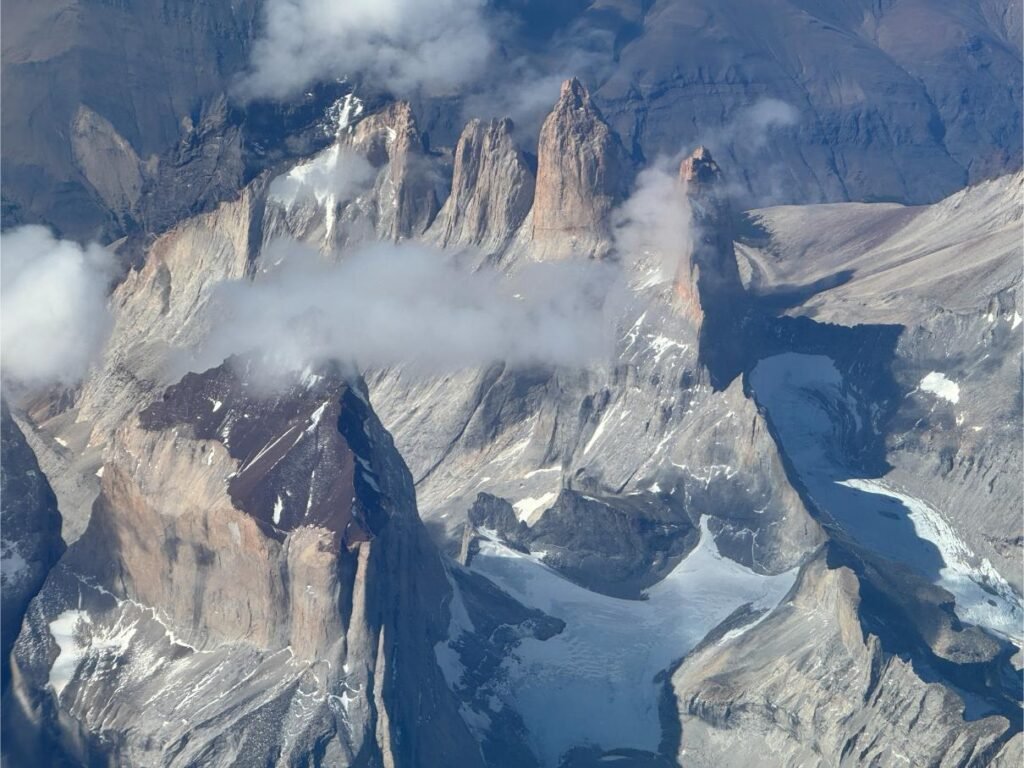
Patagonia from the plane, photo by Debbie Stone
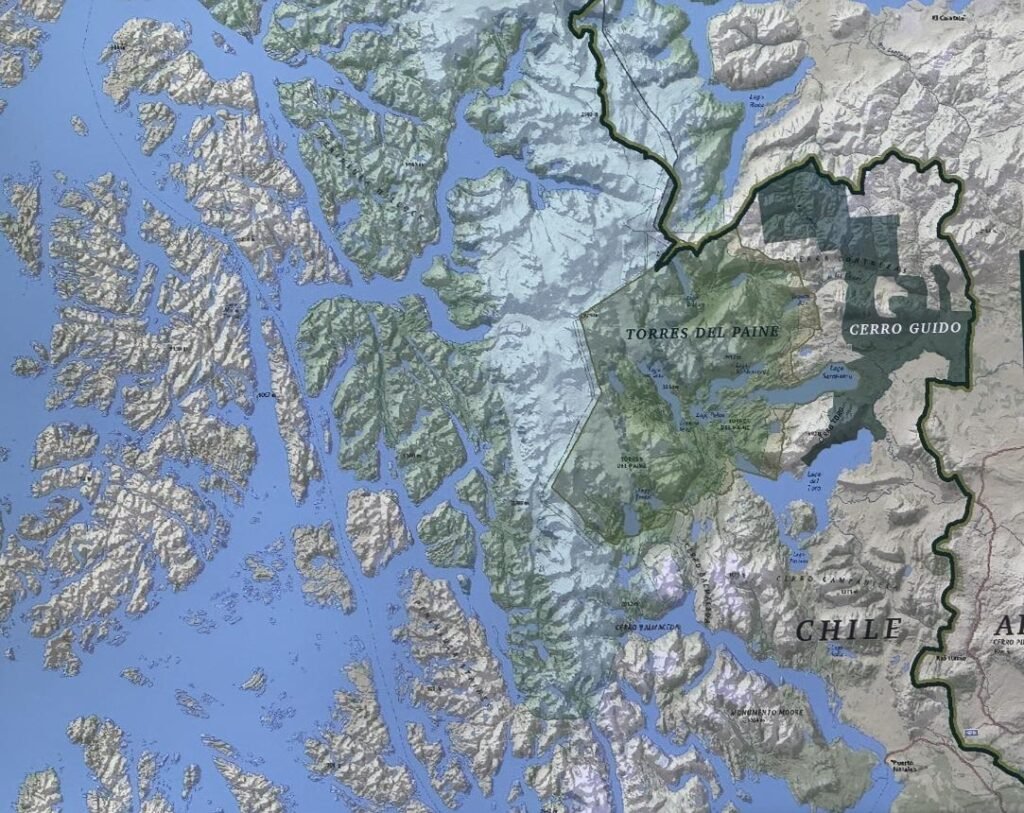
Map showing where the Estancia is in relation to Torres del Paine National Park, photo by Debbie Stone
Estancia Cerro Guido borders the eastern side of Torres del Paine National Park in southern Chilean Patagonia. The ranch covers an area of roughly 250,000 acres and is the largest estancia in the area.
The park’s name refers to three tall rock towers that comprise the most recognizable site in the area. These towers are very distinct 8,000-foot granite peaks that stand as sentinels over the Paine Massif, a spur of the Andes. Torres is the Spanish word for towers and Paine is the Tehuelche (an indigenous South American group) word for blue.
Torres del Paine National Park was declared a Biosphere Reserve by UNESCO and the eighth wonder of the world in 2013. It spans over half a million acres and was first founded as a National Tourism Park in 1959, when the main activity of the area was still livestock, and tourism was the purvey of a few adventuresome folks. In 1970, more acres were added to the terrain and it was officially given the name it’s known as today.
The park is a world-class attraction, often described as one of the most breathtakingly beautiful corners on Earth. It boasts an exceptional landscape that draws avid hikers, nature lovers and photographers from around the world.
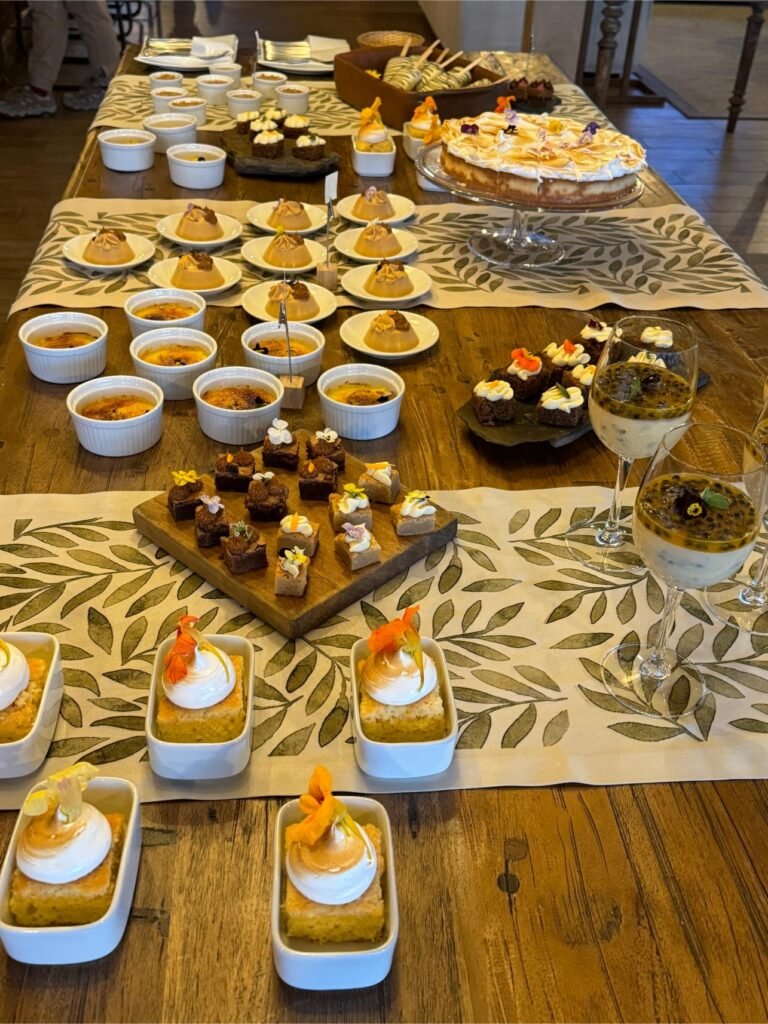
Dessert display, photo by Debbie Stone
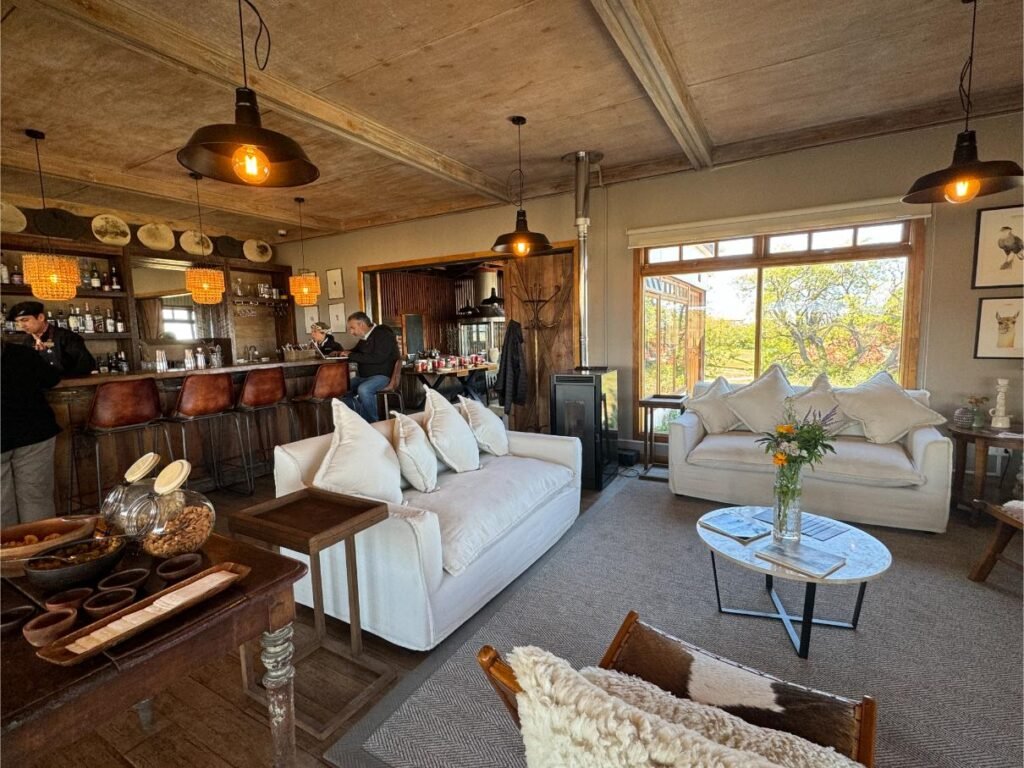
Estancia Cerro Guido bar and sitting area, photo by Debbie Stone
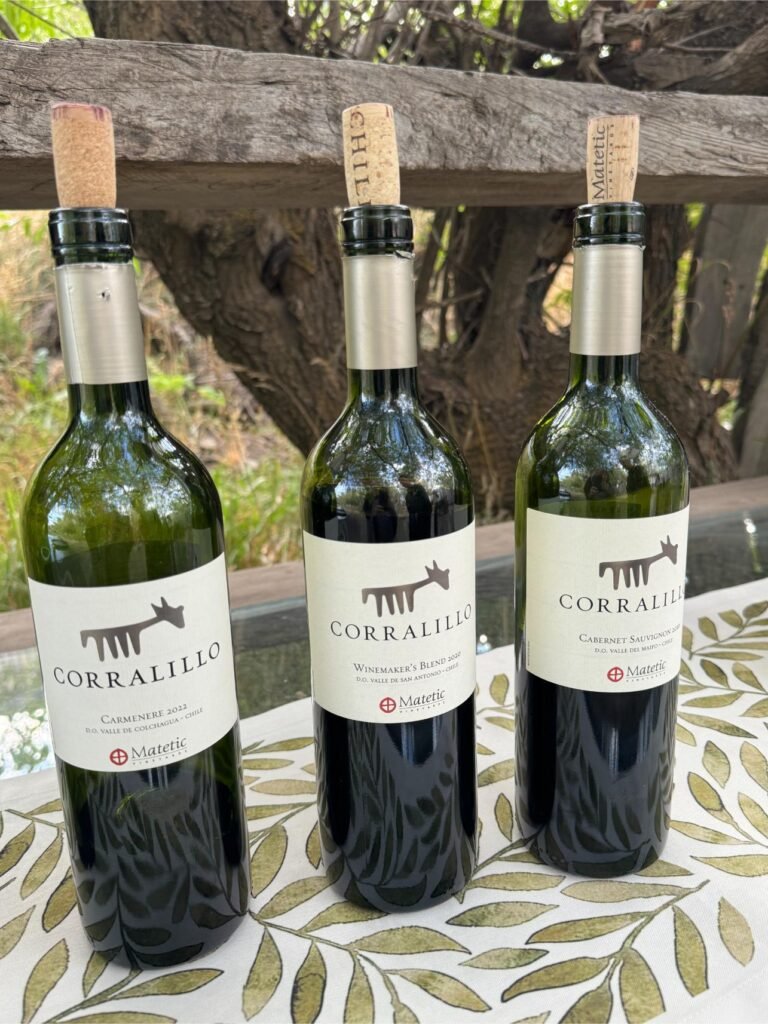
Lunch and dinner meals are accompanied by Chilean wines, photo by Debbie Stone
As a guest of Estancia Cerro Guido, you can choose either the all-inclusive package or all-inclusive private package. Both offer full board, along with an open bar, entrance fees to the National Park, a number of excursions (shared or private depending on the package) and shared or private transfers from Puerto Natales (less than two hours) or Punta Arenas (closer to five hours).
My husband and I spent four days at the Estancia, as part of a tour we booked with Pura Aventura, which also included stays in other parts of Chile, as well as in Argentine Patagonia and Buenos Aires. The tour was private, with the exception of our time at the Estancia, where we did shared excursions with a few other like-minded guests.
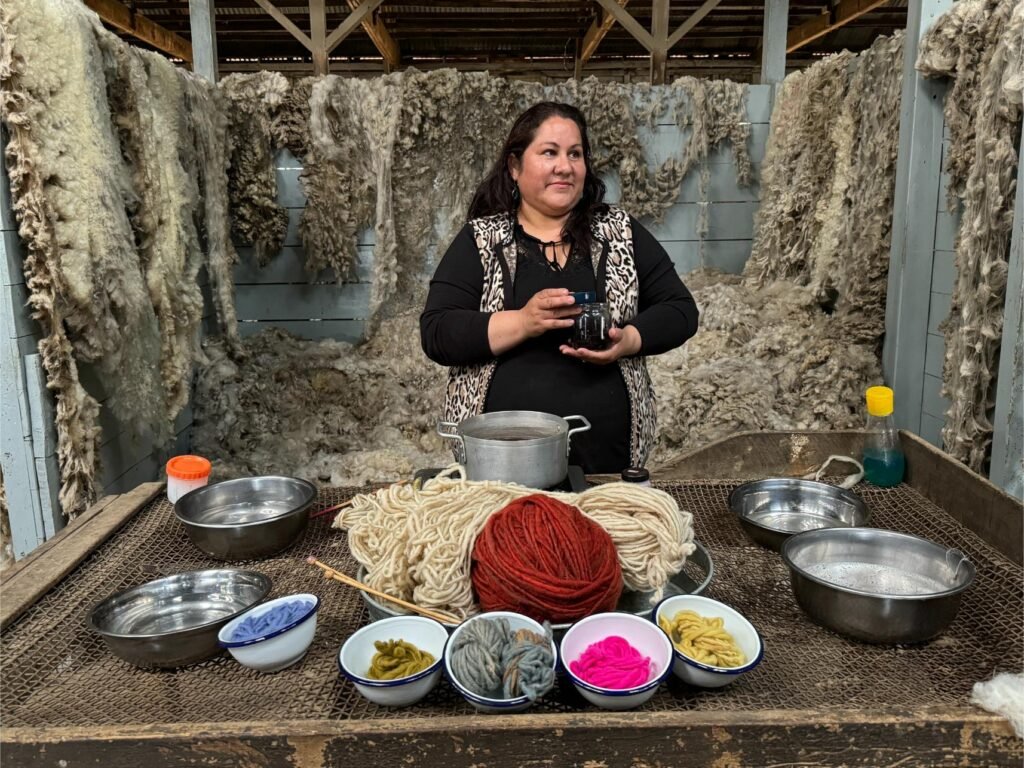
Dying the wool, photo by Debbie Stone
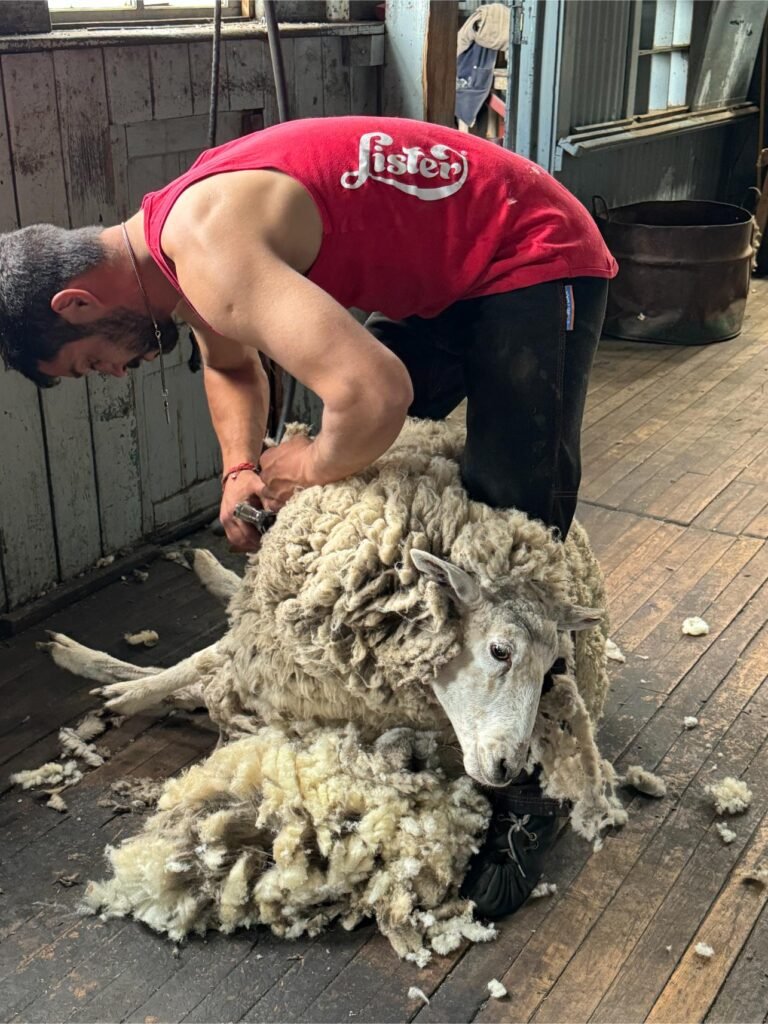
Shearing a sheep at the Estancia, photo by Debbie Stone
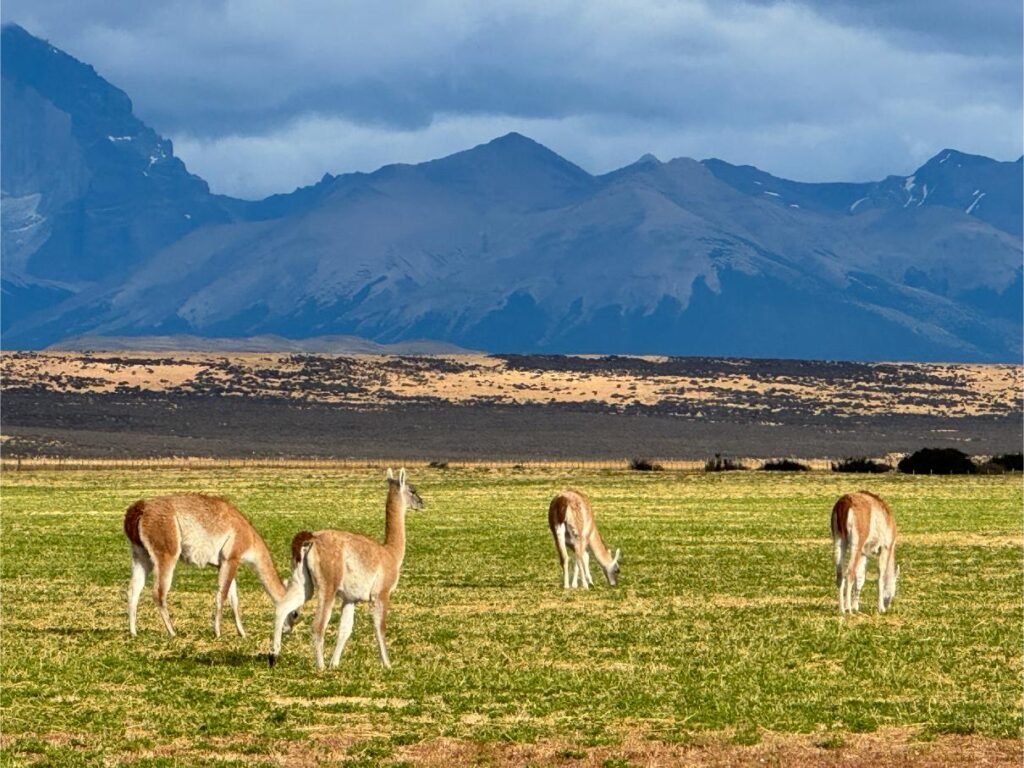
Guanaco, photo by Debbie Stone
Pura Aventura is committed to sustainable travel and has been recognized as one of the best travel companies for the eco-conscious traveler by Conde Nast. This highly reputable company specializes in crafting tailored vacations to various destinations in Europe, Central and South America.
Estancia Cerro Guido has twelve rooms in its guesthouse and has been designed in an authentic English style with all the creature comforts you’d expect from a luxury property. The décor is understated elegance with classic furnishings, fabulous featherbeds, organic amenities and plenty of space, yet cozy and comfy.
Within the guesthouse are two, charming parlors, also in the English style. Guests have full use of these rooms to lounge in, peruse the historical photos, enjoy coffee or tea and a bottomless cookie jar!
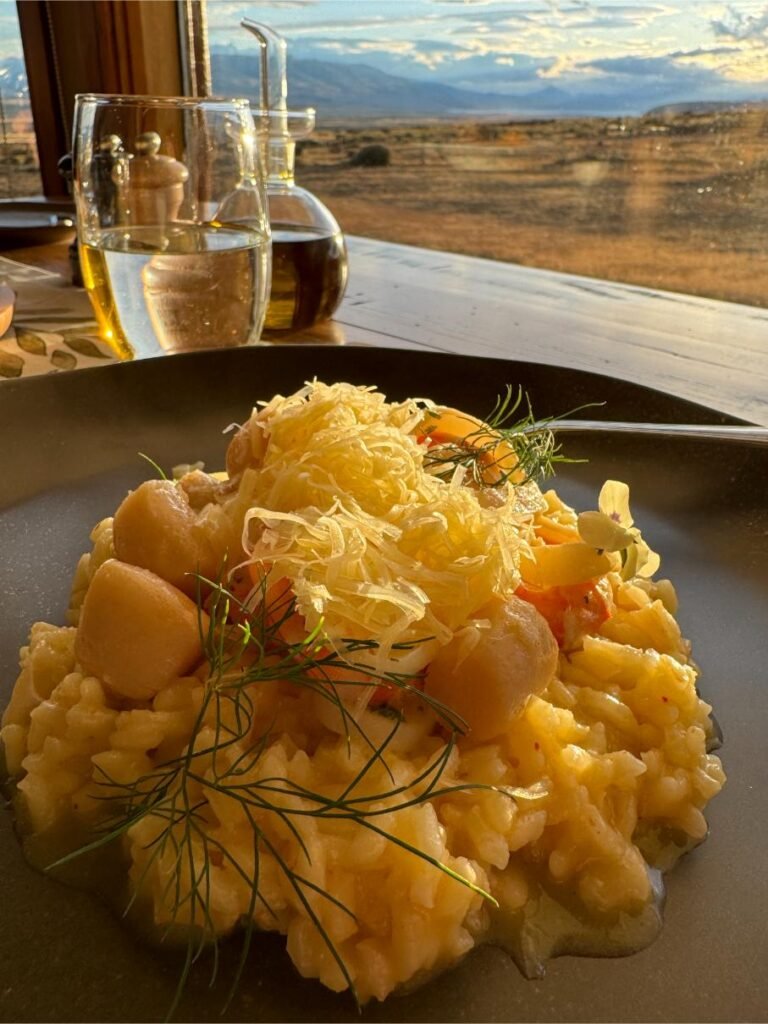
Risotto with scallops, photo by Debbie Stone
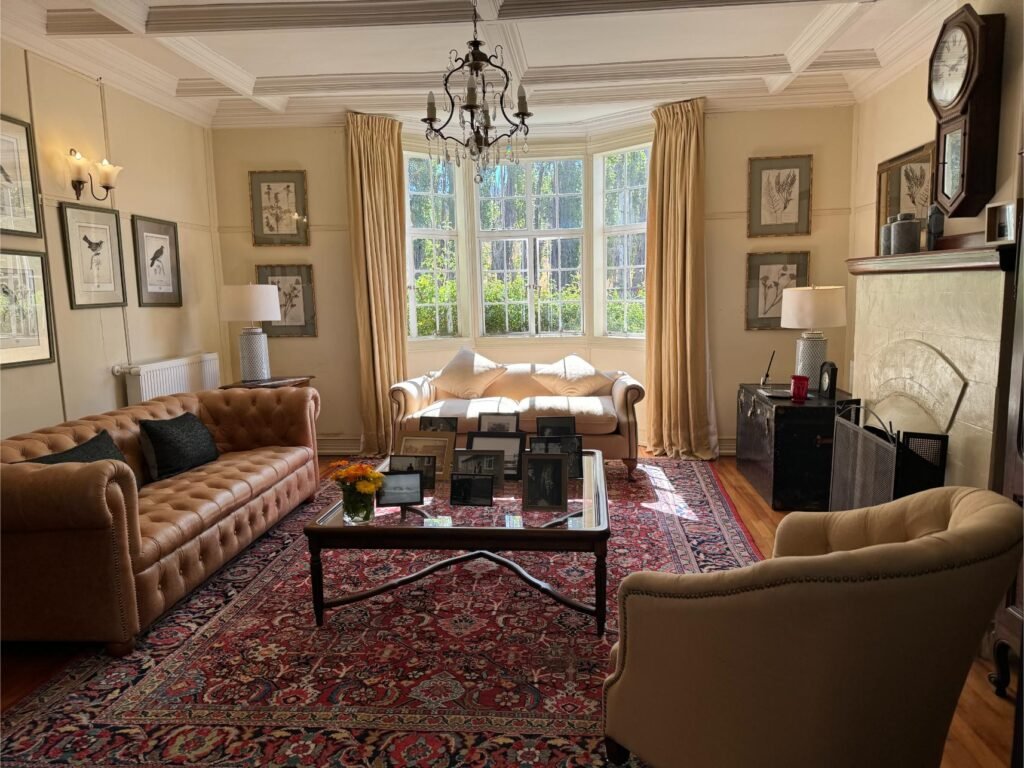
Parlor common area at Estancia Cerro Guido, photo by Debbie Stone

Reflective beauty, photo by Debbie Stone
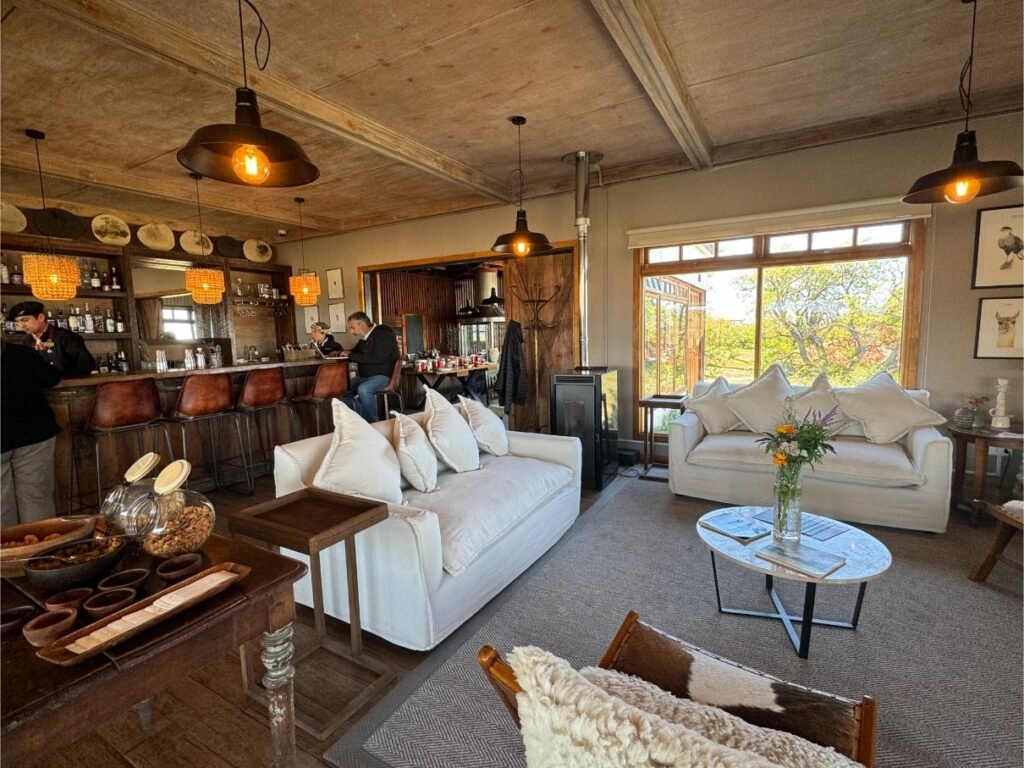
Estancia Cerro Guido bar and sitting area, photo by Debbie Stone
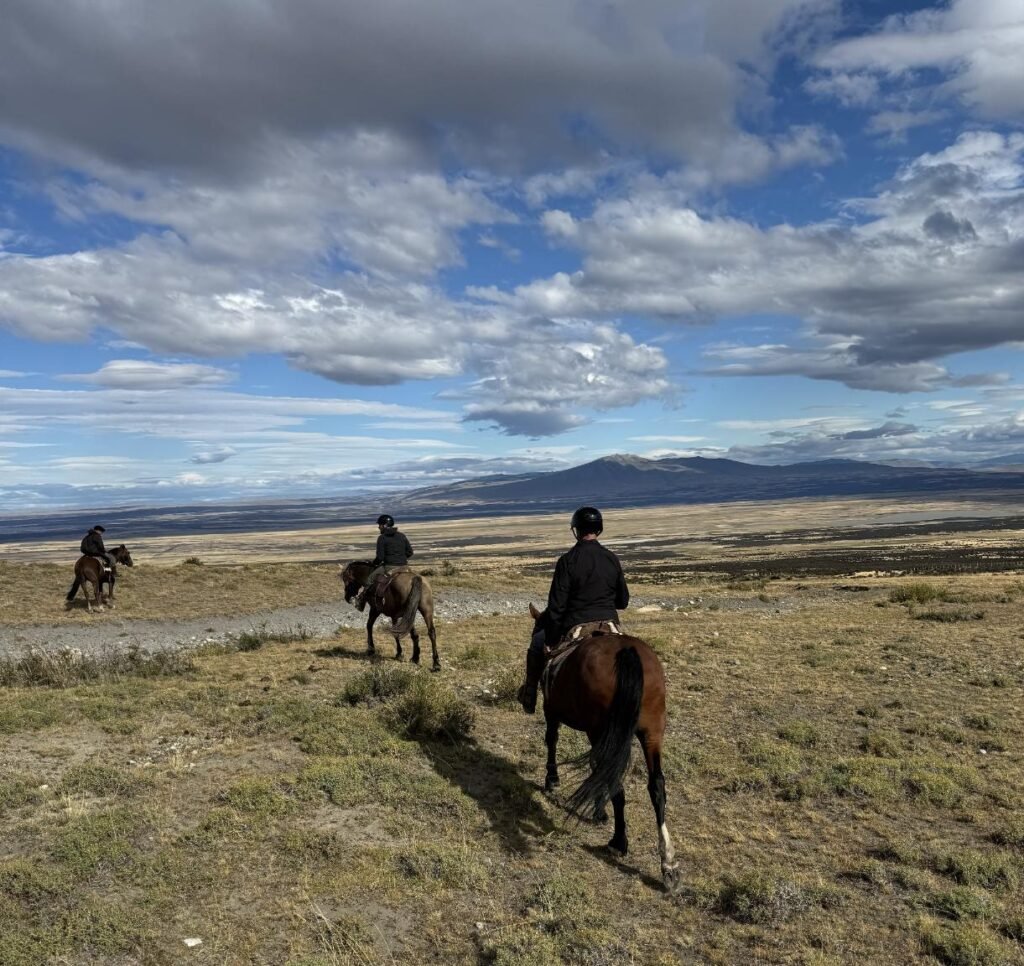
Riding amid the pampas, photo by Debbie Stone
The main house is where the restaurant, bar and common seating areas are and where the reception desk is located. A wall of windows faces the famed Torres del Paine. Dining everyday with such a picturesque view is so special and when the sun sets, it’s magical. The sky and peaks are awash with painterly hues that change by the minute. And if you happen to be up at sunrise (i.e. for the early wildlife conservation safari), the colors are even more vivid and dramatic.
As for the food, know you won’t go hungry at the Estancia. Breakfast is buffet-style with fresh baked goods, fruit, cheeses, meats, yogurt, eggs to order, etc. At lunch and dinner, guests choose from a multi-course menu of salads, soups, entrees like hake, chicken, shrimp, risotto and pasta, steak, beef stew, ribs and more. Occasionally, there is a traditional lamb roast BBQ. Dessert is a mind-boggling array of sumptuous sweets.
The food is fresh and seasonal with much of the produce coming from the ranch’s onsite garden. Exclusive wines accompany lunch and dinner. Service is warm and attentive, as it is throughout the property. Every employee I met, from the restaurant waitstaff and bartenders to the housekeepers, guides and drivers, was welcoming, courteous and helpful. It’s clear that hospitality takes centerstage at the ranch.
Tours and excursions are a mainstay of the Estancia. The ranch prides itself on its extensive menu of activities for guests, from short hikes to daylong treks. The most classic (and challenging) hike is the Base de las Torres or Base of the Towers, which involves a 13-mile round trip and takes roughly eight to ten hours to complete. If such a trek is not for you, know there are plenty of trails suited for a range of levels and abilities. You don’t have to be an uber hiker to enjoy and appreciate this privileged destination.
The Estancia also offers overland park tours that include several short hikes, conservation safaris, cultural and history tours, horseback riding trips, fly fishing excursions and more. All activities are led by knowledgeable guides who are well-versed in the landscape, history and wildlife of Patagonia, and who are clearly passionate about this enchanting place.
As you explore the area on these excursions, you’ll get a sense of the vastness of Torres del Paine National Park and its surroundings. It’s an awe-inspiring, diverse topography with a never-ending sky. Whether you hike, horseback ride or take another tour, you’ll be treated to exquisite scenes of snow-capped mountains, forests, lakes in all shades of blue, rushing rivers, waterfalls, glaciers, the immense pampa and, of course, wildlife in their natural habitat.
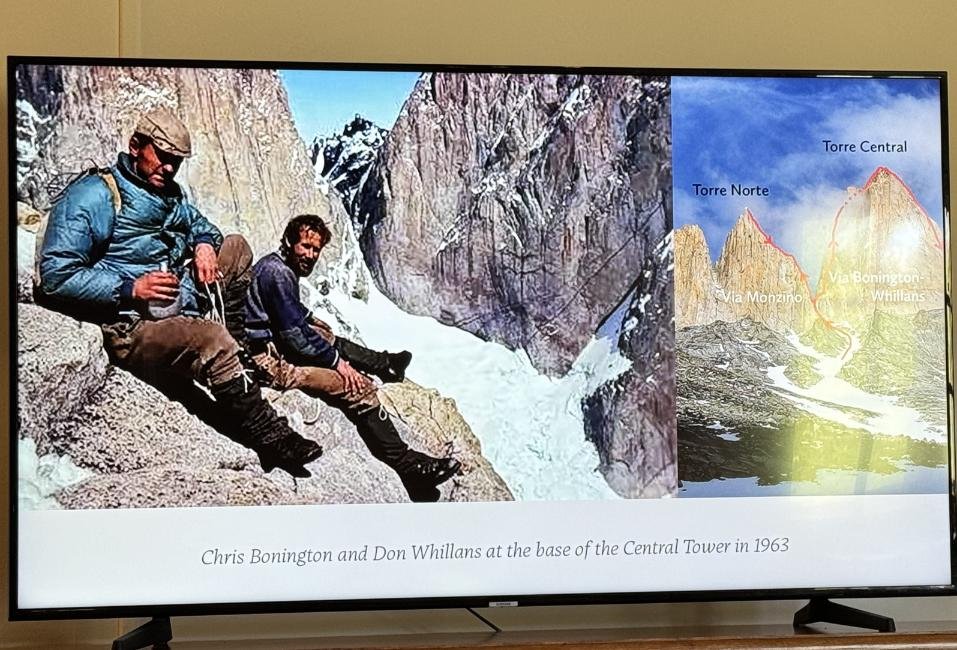
Learn about mountain climbing lore on a culture and history tour of the Estancia, photo by Debbie Stone
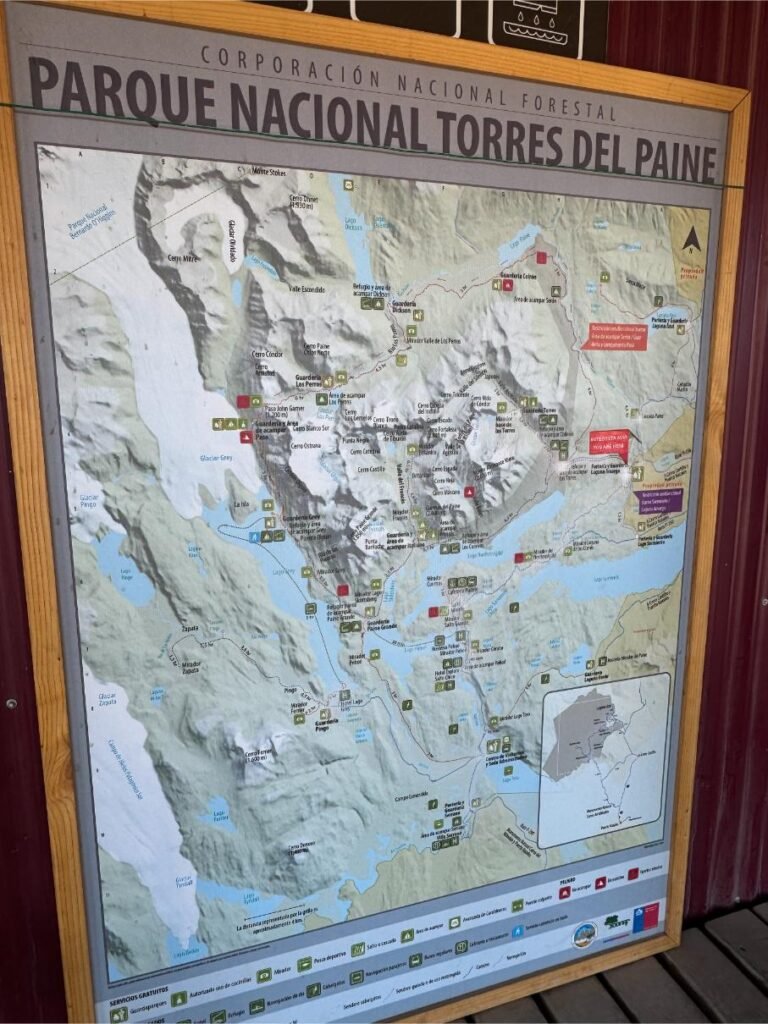
Map of the park, photo by Debbie Stone
Torres del Paine National Park is home to the guanaco, puma, fox, rhea, condor, flamingo, armadillo and other creatures. The guanaco, which is related to the camel like the llama and alpaca, is prolific here. It can be found grazing the grasslands, typically in small groups of females with their young and one dominant male.
These graceful animals can run upwards of 35 miles per hour, faster than any other Patagonian animal except the puma. If they sense danger, one of the guanacos will emit a piercing warning cry, signaling the herd, which will swiftly flee. Guanaco can also jump and are known to leap over fences that are nearly seven feet tall. I saw this happen on several occasions and it’s an impressive feat!
The puma is the guanaco’s major predator in Patagonia. But though the puma is faster – capable of running fifty miles an hour – it is a sprinter and cannot maintain that speed for very long. That explains why this animal typically stalks its prey and then springs on it, instead of chasing it down.
Though I saw countless guanacos during my visit, unfortunately, I never saw a puma. Despite plenty of opportunities to try and spot one while on wildlife safaris and park tours or hiking ventures, these creatures were elusive and remained out of sight. Our guides would tell us of having seen the animals, often in small family groups, particularly at dawn or dusk. But of course, they reminded us that pumas, like all wildlife, have their own agenda and it’s only by chance that people see them.
Besides hordes of guanaco, I saw armadillo, gray fox, flamingo, rhea and condor during my visit. The rhea is identified as Darwin’s or lesser rhea and looks like a small ostrich. This bird is flightless, but known to be an adept runner. It’s also unique in that once the female lays its eggs, she departs and the male protects the eggs and raises the chicks. The paternal instinct is in full force!
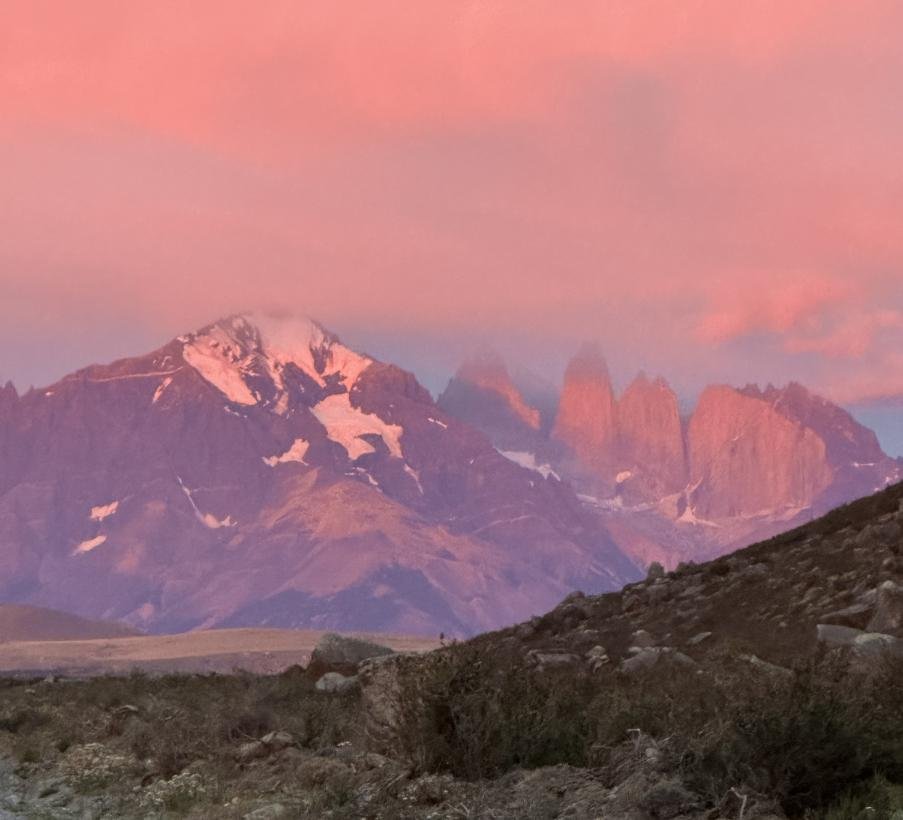
Sunrise on the towers, photo by Debbie Stone
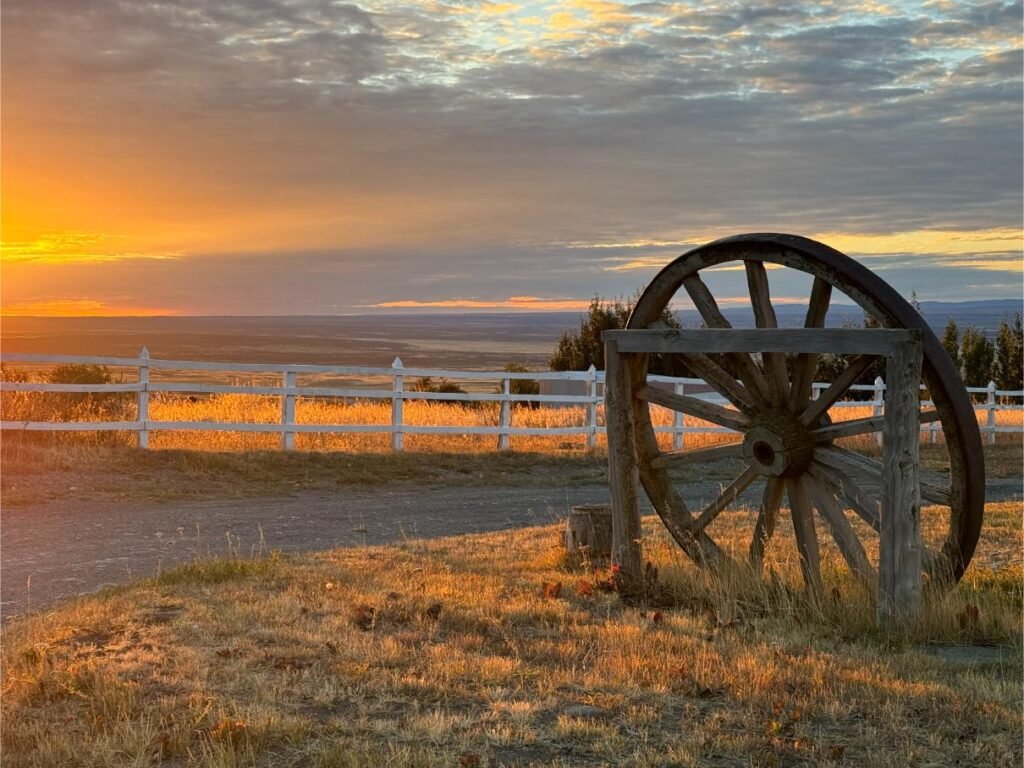
Sunsets are breathtaking, photo by Debbie Stone
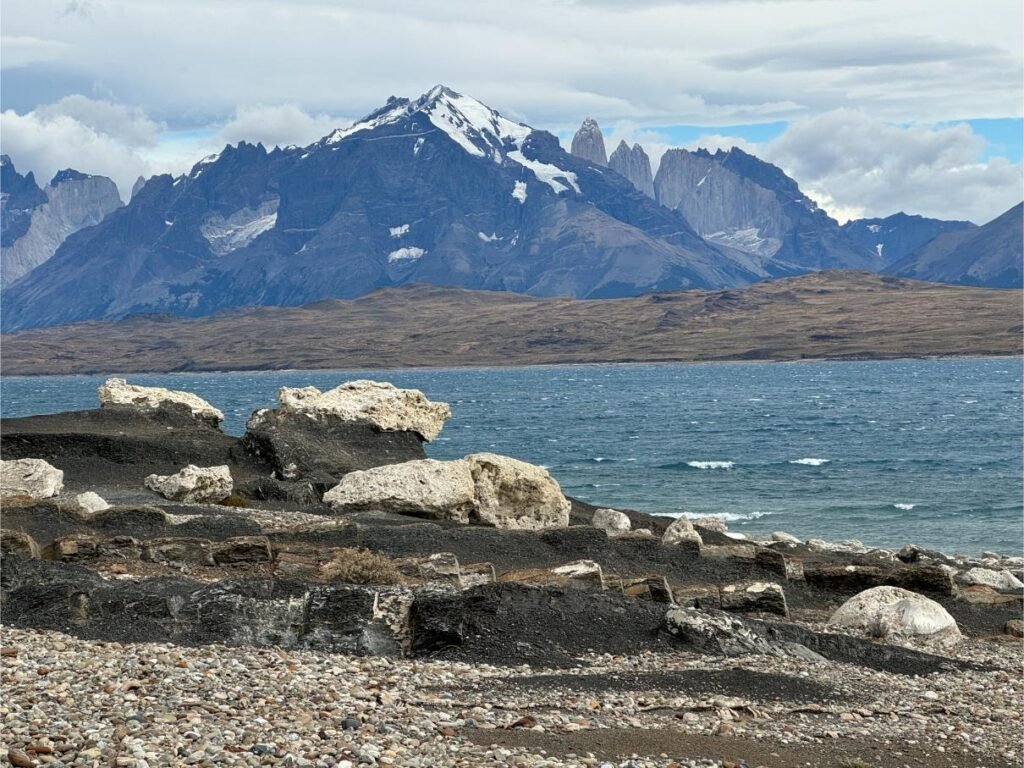
Sarmiento Lake, photo by Debbie Stone
It’s hard not to miss the majestic Andean condor. As the world’s largest flying bird, it weighs over thirty pounds, is four-feet in length and boasts an eleven-foot wingspan. Due to its weight, the condor needs the winds and thermals to lift its huge body into the air. When you see one, it’s usually soaring over the peaks and canyons of the landscape, keeping its sharp eyes peeled for carrion in scavenger fashion.
The ranch is dedicated to wildlife conservation through the Cerro Guido Foundation. One of its main objectives is to achieve the coexistence of the livestock industry and species like the puma, which has been persecuted over the years for being the dominant enemy in sheep production.
The Foundation conducts research and studies to document and demonstrate the feeding habits of the puma in this region, as well as to show the proficiency of cattle handling and protection techniques through the use of guard dogs, particularly the Great Pyrenees and Maremma shepherd breeds. The dogs accompany the sheep and the puma is alerted to their presence. Wanting to avoid conflict with the canines, the puma wisely moves away from the area.
Monitoring of the puma by means of GPS collars and cameras at key places helps to track the animals and know where the “hot spots” are, as these represent “risk zones” for leaving livestock.
Another area of research being conducted at the Estancia is in paleontology. Over the past decade, the landscape has been the focus of attention of noted archaeologists and paleontologists from around the world, who have come to do expeditions. In the course of these trips, they have discovered fossils dating back millions of years. And most significantly, they have found dinosaur bones and the first record of Hadrosaurs in Chile.
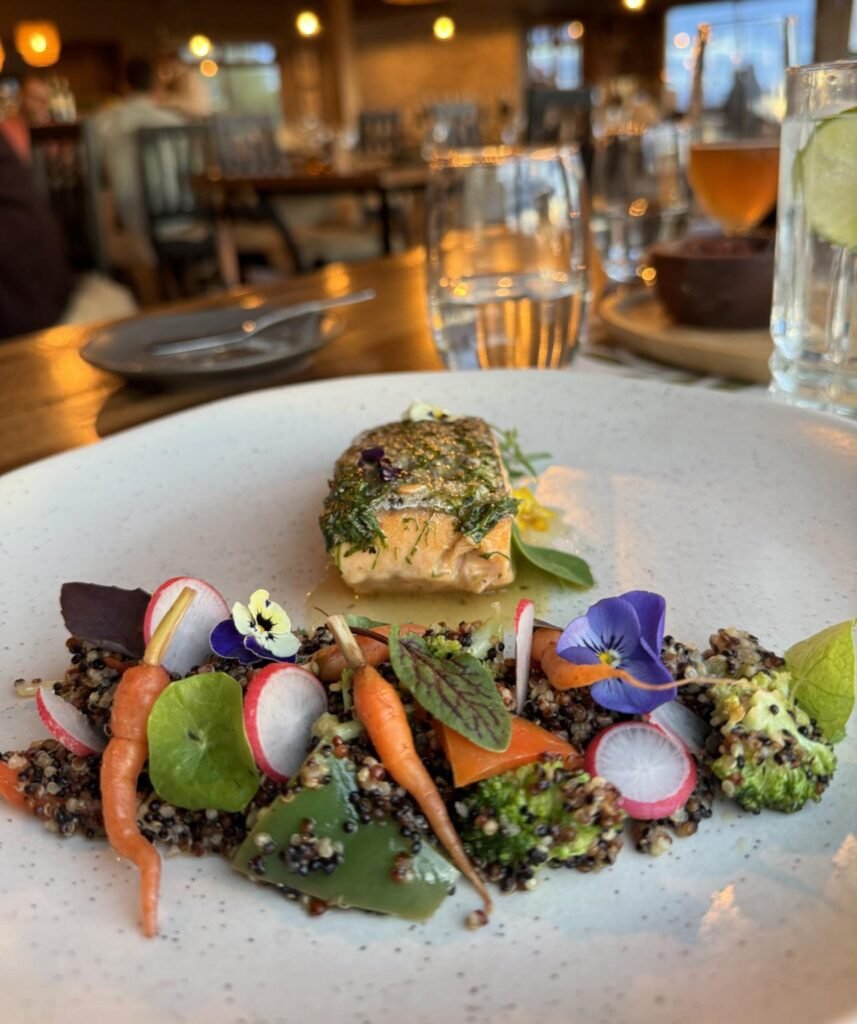
Tasty salmon, photo by Debbie Stone

Surveying the landscape, photo by Debbie Stone
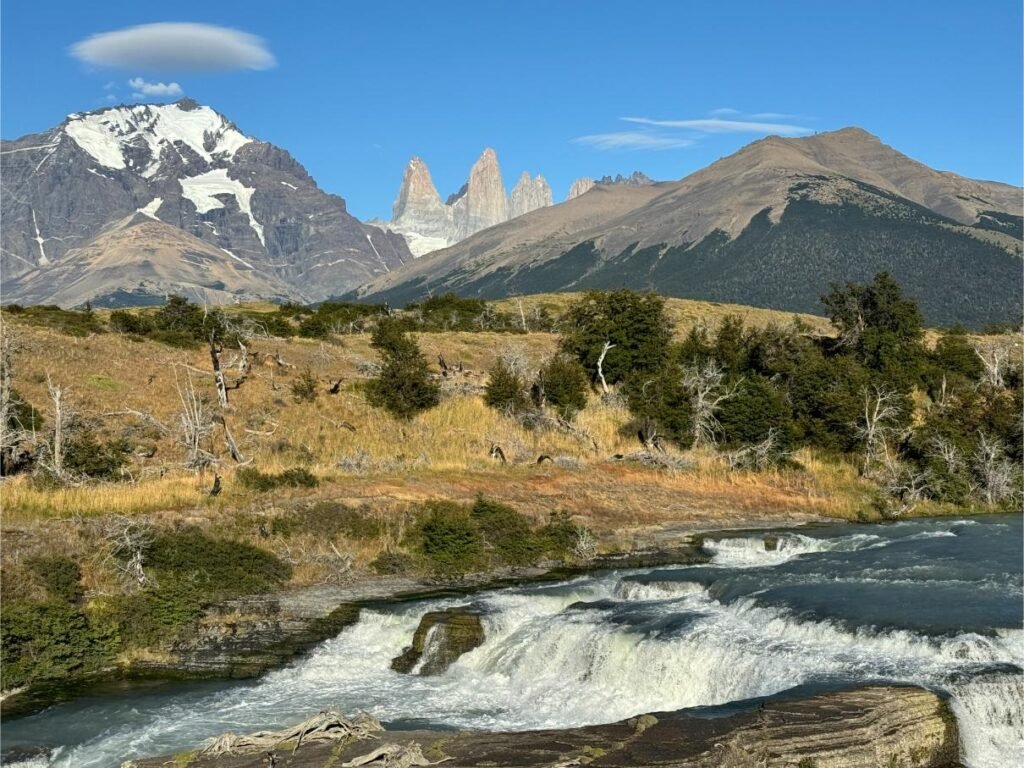
The scenery is diverse, photo by Debbie Stone
In order to learn more about the Estancia itself, all guests are invited to join an historical and cultural tour of the property. You’ll hear how the place was founded over a century ago and who the key players were in its establishment and growth. It’s a journey through time involving the roots of the cattle and sheep industry in Patagonia, along with mountain climbing lore. Maps, diagrams and historical photos assist in the presentation.
The tour also takes guests to different areas on the property, including the stables, orchard, garden, greenhouses and shearing shed, while your guide notes the typical architectural style of the buildings, which are actually restored farmhouses. If you’re lucky, you’ll even get a chance to see sheep being sheared (depending on time/season) and learn how the wool is processed and spun into products for sale. Additionally, you may be able to observe the sheep dogs herding the sheep out of the barn and see how the gauchos deftly work with the animals. These clever dogs are their faithful companions.
The tour not only provides an in-depth view of the Estancia, but also gives you an understanding of the cultural heritage of Patagonia, the way of life of the people and the rich traditions that define its essence.
www.estanciacerroguido.com/en/
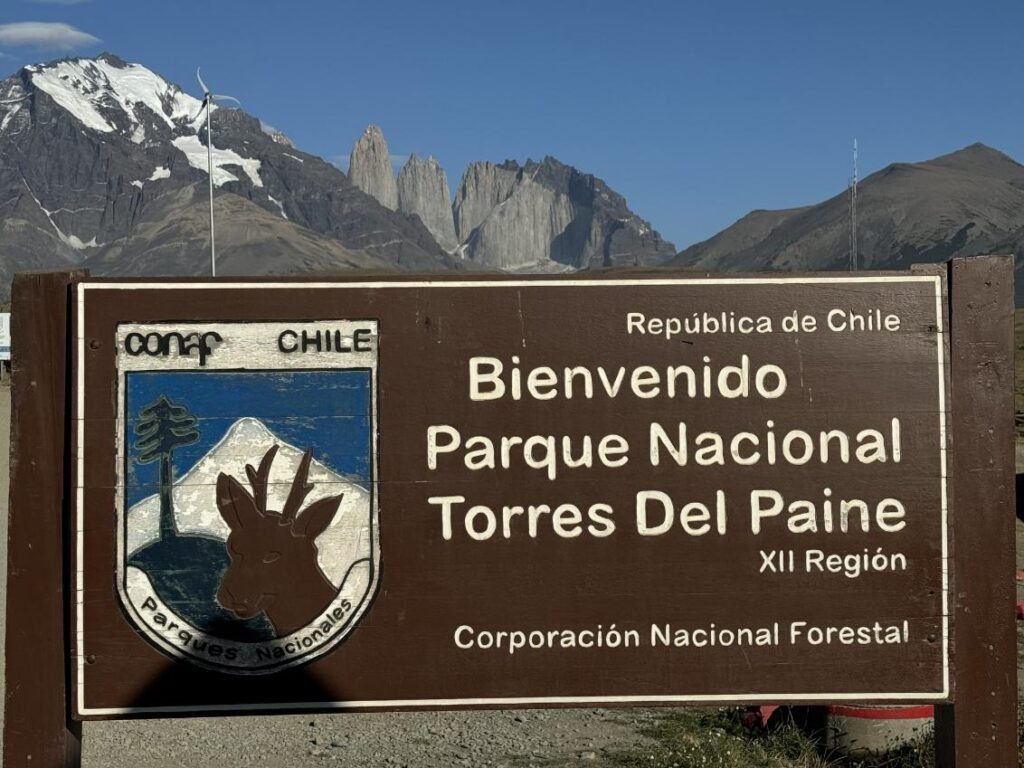
Welcome to Torres del Paine NP, photo by Debbie Stone
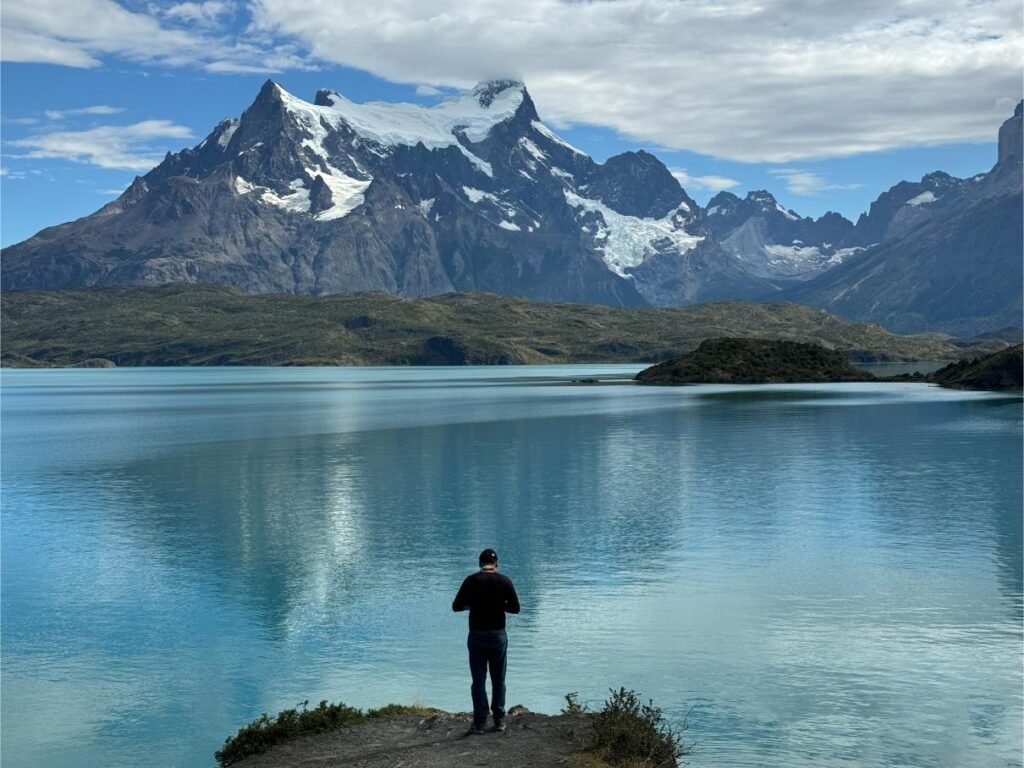
Turquoise lake, photo by Debbie Stone

